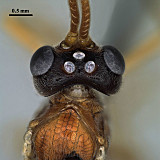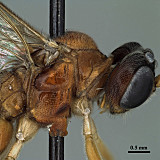This page was assembled by Bob Wharton as part of a larger collaborative effort on the genera of Ctenopelmatinae, and as part of a study of this genus prepared by Heather Hendrickson and Bob Wharton. The work is based on specimens in the Texas A&M University collection as well as material borrowed from China,
MRAC,
CNC,
BMNH, and
AEI. We are particularly grateful to Xue-xin Chen for assistance in making the Chinese specimens available for examination as well as David Wahl, Andy Bennett, Gavin Broad, and Eliane De Coninck. This work would also not have been possible without the groundwork provided by Ian Gauld’s study of the Australian and Costa Rican faunas, and we are particularly grateful for his assistance in many aspects of this study. We thank David Wahl for useful feedback throughout our study and to Gavin Broad for exchange of information on Perilissini. Matt Yoder provided considerable assistance with databasing issues, and our use of PURLs (http://purl.oclc.org) in this regard follows the example of their use in publications by Norm Johnson. Lauren Ward graciously assisted with image capture, processing, and formatting. Page last updated December, 2014.
This material is based upon work supported by the National Science Foundation under Grant Number DEB 0328922 with REU supplements DEB 0723663 and number 1026618.
Any opinions, findings, and conclusions or recommendations expressed in this material are those of the author(s) and do not necessarily reflect the views of the National Science Foundation.



